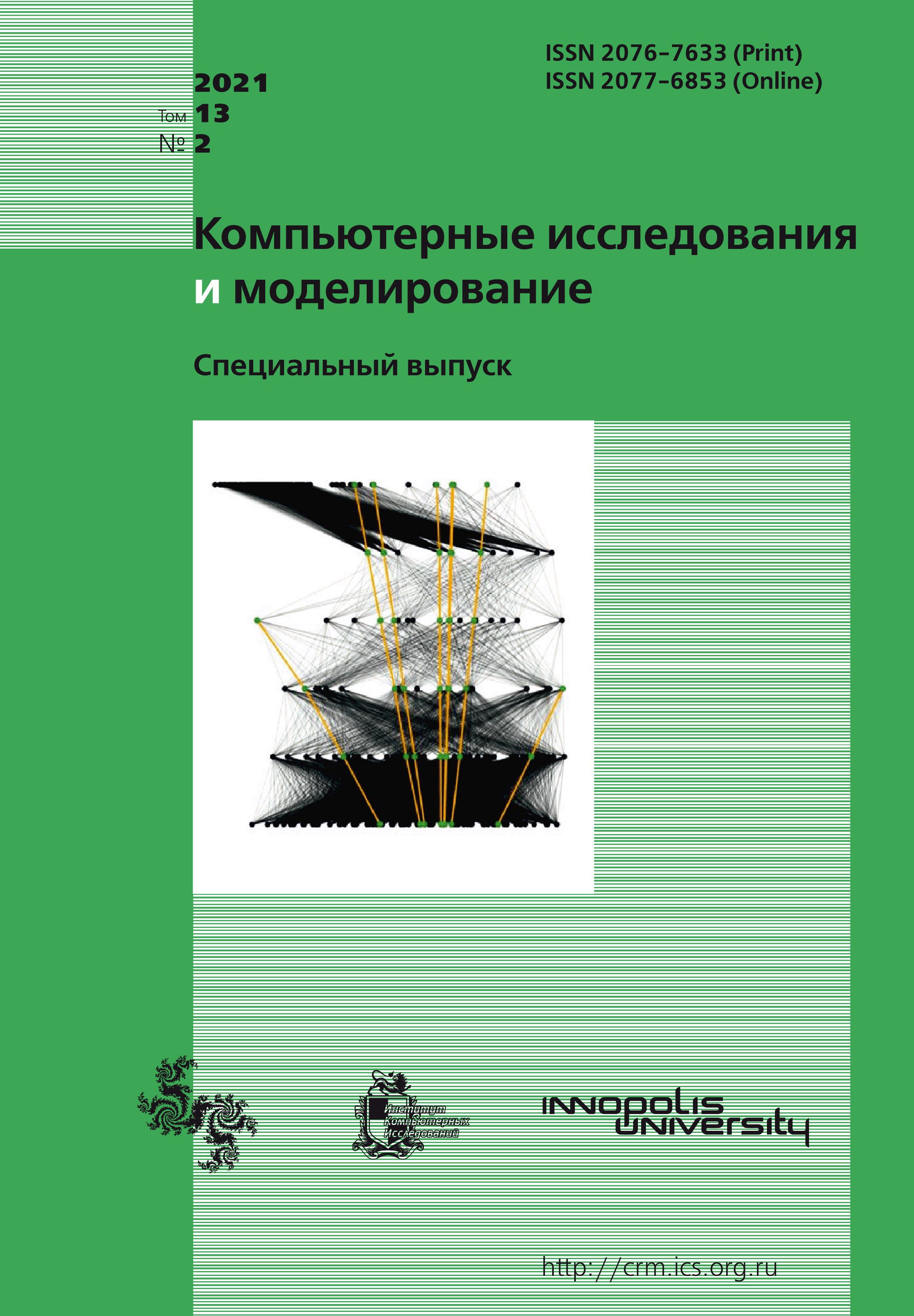All issues
- 2025 Vol. 17
- 2024 Vol. 16
- 2023 Vol. 15
- 2022 Vol. 14
- 2021 Vol. 13
- 2020 Vol. 12
- 2019 Vol. 11
- 2018 Vol. 10
- 2017 Vol. 9
- 2016 Vol. 8
- 2015 Vol. 7
- 2014 Vol. 6
- 2013 Vol. 5
- 2012 Vol. 4
- 2011 Vol. 3
- 2010 Vol. 2
- 2009 Vol. 1
Method of forming multiprogram control of an isolated intersection
The simplest and most desirable method of traffic signal control is precalculated regulation, when the parameters of the traffic light object operation are calculated in advance and activated in accordance to a schedule. This work proposes a method of forming a signal plan that allows one to calculate the control programs and set the period of their activity. Preparation of initial data for the calculation includes the formation of a time series of daily traffic intensity with an interval of 15 minutes. When carrying out field studies, it is possible that part of the traffic intensity measurements is missing. To fill up the missing traffic intensity measurements, the spline interpolation method is used. The next step of the method is to calculate the daily set of signal plans. The work presents the interdependencies, which allow one to calculate the optimal durations of the control cycle and the permitting phase movement and to set the period of their activity. The present movement control systems have a limit on the number of control programs. To reduce the signal plans' number and to determine their activity period, the clusterization using the $k$-means method in the transport phase space is introduced In the new daily signal plan, the duration of the phases is determined by the coordinates of the received cluster centers, and the activity periods are set by the elements included in the cluster. Testing on a numerical illustration showed that, when the number of clusters is 10, the deviation of the optimal phase duration from the cluster centers does not exceed 2 seconds. To evaluate the effectiveness of the developed methodology, a real intersection with traffic light regulation was considered as an example. Based on field studies of traffic patterns and traffic demand, a microscopic model for the SUMO (Simulation of Urban Mobility) program was developed. The efficiency assessment is based on the transport losses estimated by the time spent on movement. Simulation modeling of the multiprogram control of traffic lights showed a 20% reduction in the delay time at the traffic light object in comparison with the single-program control. The proposed method allows automation of the process of calculating daily signal plans and setting the time of their activity.
Copyright © 2021 Vlasov A.A., Pilgeikina I.A., Skorikova I.A.
Indexed in Scopus
Full-text version of the journal is also available on the web site of the scientific electronic library eLIBRARY.RU
The journal is included in the Russian Science Citation Index
The journal is included in the RSCI
International Interdisciplinary Conference "Mathematics. Computing. Education"







